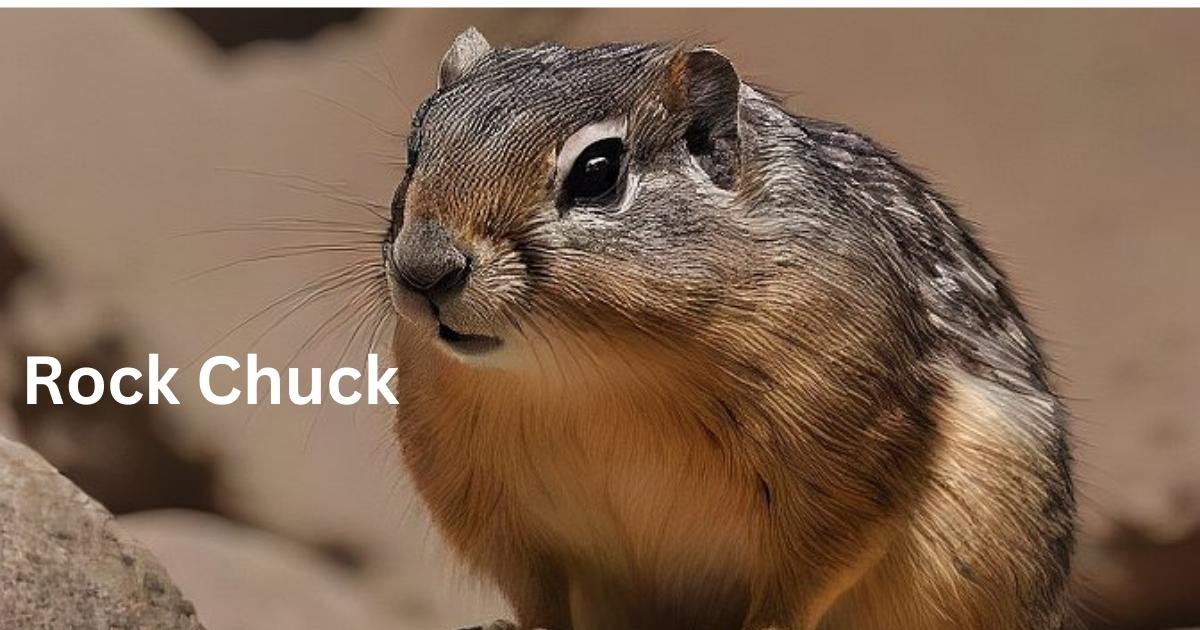Rock Chuck, also known as yellow-bellied marmots, are fascinating mammals that thrive in rocky terrains. These creatures, often mistaken for groundhogs, are native to North America and are well-adapted to mountainous regions. Let’s explore their world to understand their habits, habitats, and unique traits.
Physical Characteristics of Rock Chucks
Rock chucks are medium-sized rodents with stout bodies covered in coarse fur. Their yellowish bellies contrast with their dark brown or gray backs, making them easily identifiable. On average, they weigh between 5-11 pounds and measure around 18-24 inches, including their bushy tails.
Habitat Preferences
These marmots prefer rocky terrains with plenty of crevices for shelter and observation points to keep an eye out for predators. You can often spot them in alpine meadows, open forests, and grasslands, particularly in elevations ranging from 6,000 to 13,000 feet.
Dietary Habits of Rock Chucks
Rock chucks are herbivores, feeding primarily on grasses, wildflowers, and other vegetation. In the spring and summer, they gorge on food to build fat reserves for hibernation. Their foraging habits play a crucial role in maintaining their ecosystems by aiding seed dispersal.
Social Behavior and Communication
These animals are social creatures, often found living in colonies consisting of multiple family groups. Rock chucks communicate using a variety of vocalizations, including whistles, chirps, and screams, especially when alerting others of potential threats.
Hibernation Cycle
One of the most intriguing aspects of rock chucks is their hibernation. They enter a deep sleep during the winter months, typically from September to April, to conserve energy. During this period, their body temperature drops significantly, and their heart rate slows to just a few beats per minute.
Mating and Reproduction
Rock chuck mating season begins shortly after they emerge from hibernation. Males establish territories and attract females for breeding. Females usually give birth to 3-8 pups in underground burrows. These pups are weaned and independent within two months.
Predators and Survival Strategies
Rock chucks face numerous predators, including coyotes, foxes, eagles, and snakes. To survive, they rely on their sharp eyesight and strategic burrow placements. They also use their vocal warning system to alert the colony of impending danger.
Ecological Importance of Rock Chucks
These rodents contribute to soil aeration by digging burrows and play a part in seed dispersal through their diet. Their presence in the ecosystem helps maintain biodiversity, making them an essential component of their habitats.
Rock Chucks vs. Groundhogs
While rock chucks and groundhogs share similarities, they differ in habitat and behavior. Groundhogs prefer lowland areas, whereas rock chucks are mountain dwellers. Their physical appearances also differ slightly, with rock chucks being slimmer and more agile.
Adaptations to Rocky Environments
Rock chucks have evolved to thrive in rocky terrains. Their strong claws and padded feet allow them to climb and navigate rugged landscapes. Additionally, their coloration provides excellent camouflage against predators.
Rock Chucks in Folklore and Culture
Rock chucks have been part of Native American folklore, symbolizing preparedness due to their hibernation habits. They are also featured in local stories and traditions in mountain communities, often admired for their resourcefulness.
Threats to Rock Chucks
Despite their adaptability, rock chucks face threats such as habitat destruction, climate change, and predation. Urbanization encroaches on their habitats, while rising temperatures can disrupt their hibernation patterns.
Conservation Efforts
Conservationists are working to protect rock chuck habitats by promoting sustainable land-use practices. Monitoring their populations helps track ecological health and ensures their survival in changing environments.
How to Spot Rock Chucks in the Wild
To spot a rock chuck, visit mountainous regions during spring or summer. Look for them sunbathing on rocks or grazing in meadows. Observing from a distance ensures their safety and prevents disturbances.
Interesting Facts About Rock Chucks
They are nicknamed “whistle pigs” due to their high-pitched warning calls.
Rock chucks can lose up to 50% of their body weight during hibernation.
Their burrows can extend up to 10 feet long with multiple chambers.
Conclusion
Rock chucks are more than just adorable mountain dwellers; they are vital to their ecosystems and a joy to observe in the wild. By understanding and protecting these creatures, we contribute to the preservation of the natural world they inhabit.
FAQs
1. What is the scientific name of rock chucks?
The scientific name of rock chucks is Marmota flaviventris.
2. How long do rock chucks live?
In the wild, rock chucks typically live for 4-6 years, but they can live longer in protected environments.
3. Are rock chucks dangerous to humans?
Rock chucks are not dangerous to humans and tend to avoid contact, focusing on their own survival.
4. Do rock chucks migrate?
No, rock chucks do not migrate. Instead, they hibernate in their burrows during winter months.
5. Can rock chucks climb trees?
While not adept climbers, rock chucks can scale small rocks or ledges but rarely climb trees.

